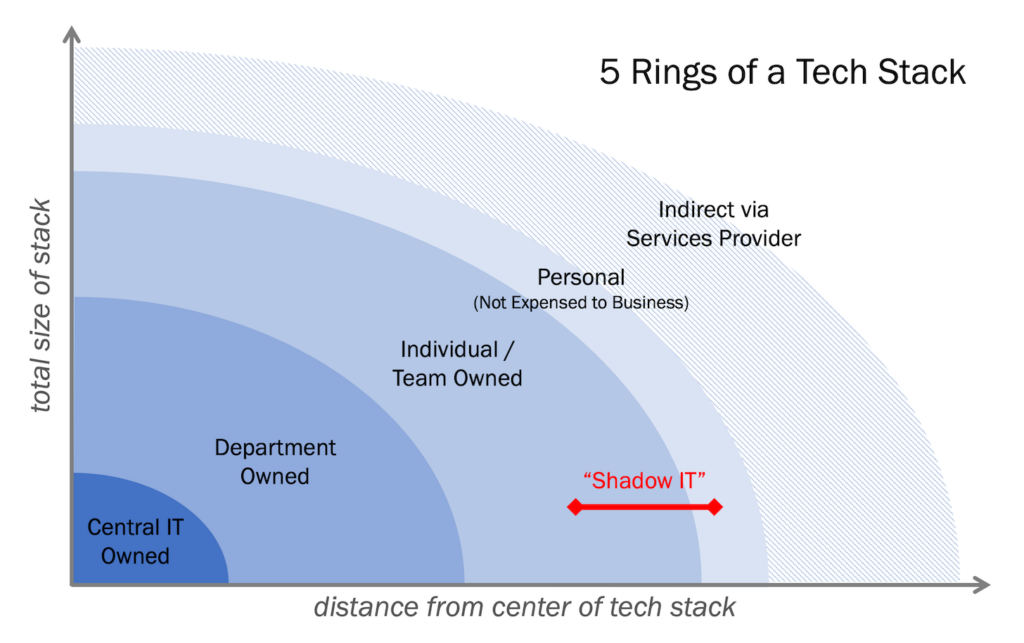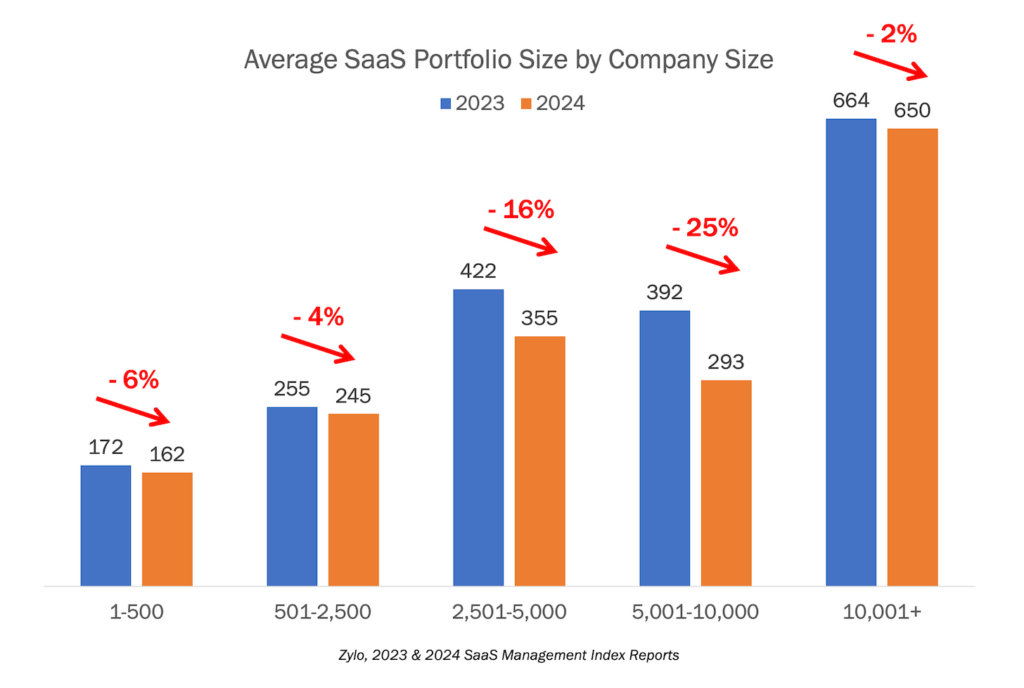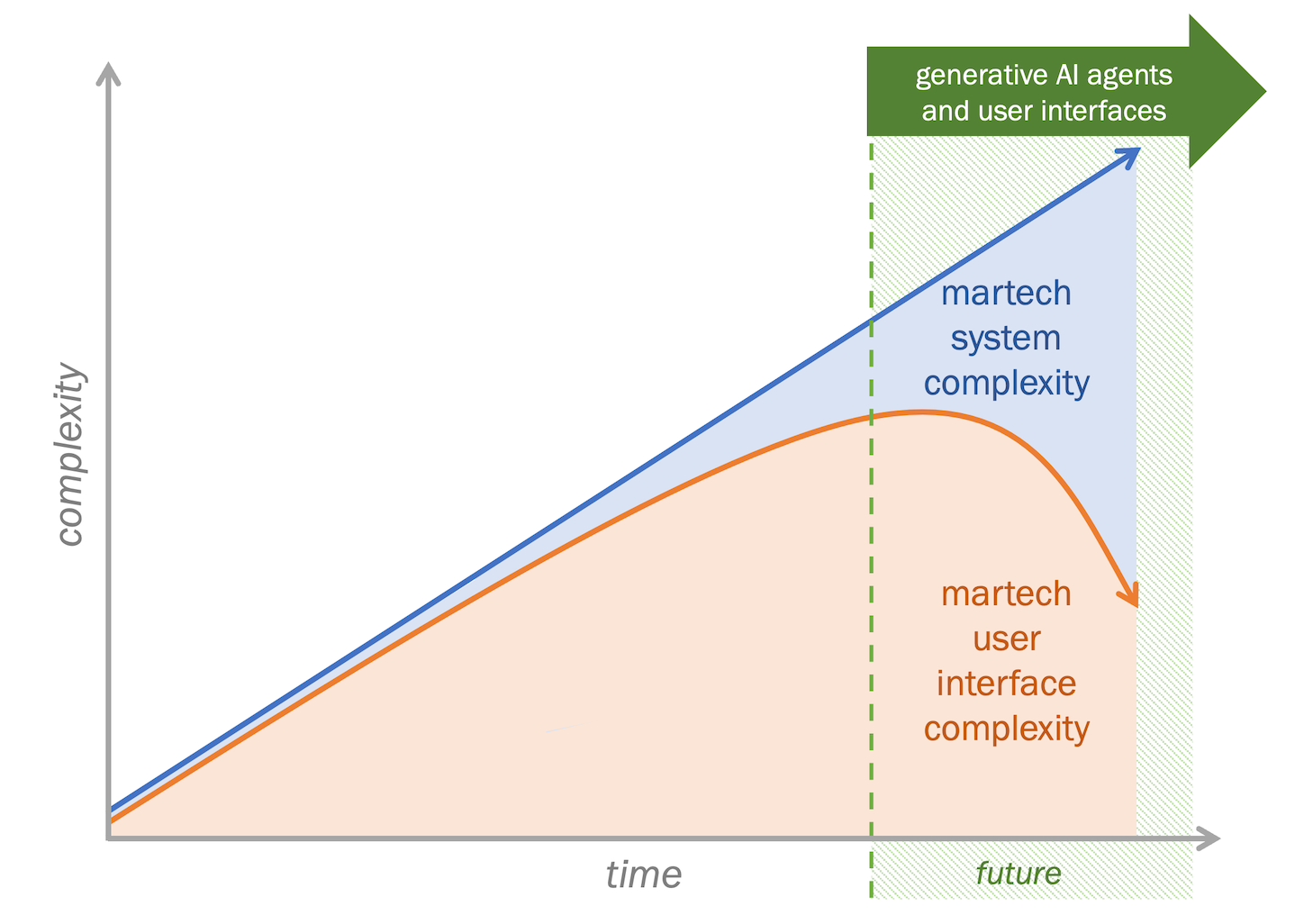
Welcome to 2024!
I expect this will be a transformative year in martech. The Martech for 2024 report we published last month (video presentation) covered several of the major trends underway, such as aggregation and composability in stacks — especially in the data layer with cloud data warehouses, lakehouses, and lakes.
The common theme of those trends is a breaking down of the boundaries between different martech apps and platforms. The silo’s days are numbered. (Can I get a hallelujiah?)
It’s a profound change. But there’s an even more profound change rolling in.
Growing complexity as a constant for two decades
For the 16 years that I’ve been covering martech on this blog, martech has been strictly increasing in complexity. And before you blame that on the explosion of the marketing technology landscape — now over 13,000 products! — recognize that all those martech tools were built in reaction to the growth in complexity of marketing itself.
When customers embraced search, marketers had to embrace SEO to persuade both people and search algorithms. When customers embraced mobile, marketers had to embrace apps, responsive web design, SMS, push notifications, WhatsApp, geofencing, etc. When customers embraced social media — Facebook, Twitter/X, LinkedIn, Instagram, TikTok — marketers had to embrace social content, social advertising, social customer service, social reputation management, influencer marketing, etc. When customers embraced online video, marketers had to embrace video content and video advertising, YouTube channels, Instagram reels, etc.
And that’s just the customer-facing side of martech. New marketing approaches such as account-based marketing (ABM) and product-led growth (PLG), intent-based and digital behaviorial marketing, customer journey mapping, unified RevOps at the intersection of sales, marketing, and customer success, ecosystem marketing, and so on.
All these inventions and innovations have made significant contributions to the discipline of marketing. But they also massively expanded the diversity and scope of marketing. And all these new and different moving parts, all interacting with each other, expoentially grew the complexity of marketing.
Martech systems — all the different software in your martech stack — grew in complexity as a function of this inherent complexity in modern marketing. And even if you chose a bundled suite of apps over a best-of-breed combination of tools, you couldn’t escape the constant flood of new features and functionality to serve the ever-widening span of your requirements and responsibilities.

It might seem like a given that the more complex martech systems became, the more complex the user interface to those systems became too. Whether you were switching among an infinite row of browser tabs for different martech apps or hunting for specific options within a mega marketing cloud, the cognitive load in just figuring out how to do any one particular thing — out of all the things that were now possible — became a significant mental tax.
This has been a major factor in plummeting martech utilization rates.
As marketing became more complex, martech systems became more complex, and the UX to those systems became more complex. It was effectively a tautology:
Marketing Complexity = System Complexity = UX Complexity
Granted, there were differences at the margin. Martech products increasingly invested in better UX as a competitive advantage. Yet even the best were swimming against the tide.
But could a new innovation reverse UX complexity?
Generative AI user interfaces turn the tide
Generative AI is the first major innovation in the history of marketing technology with the power to fundamentally reduce UX complexity.
One of the first examples of this early last year was the release of ChatSpot, a generative AI “chat UX” interface for HubSpot built by Dharmesh Shah. (Disclosure: I work at HubSpot as their VP of platform ecosystem.) Through a simple ChatGPT-like text prompt, you could ask ChatSpot to do something for you in HubSpot — create a contact, write a personalized email, run a report, etc. — and, voilà, it would just do it for you.
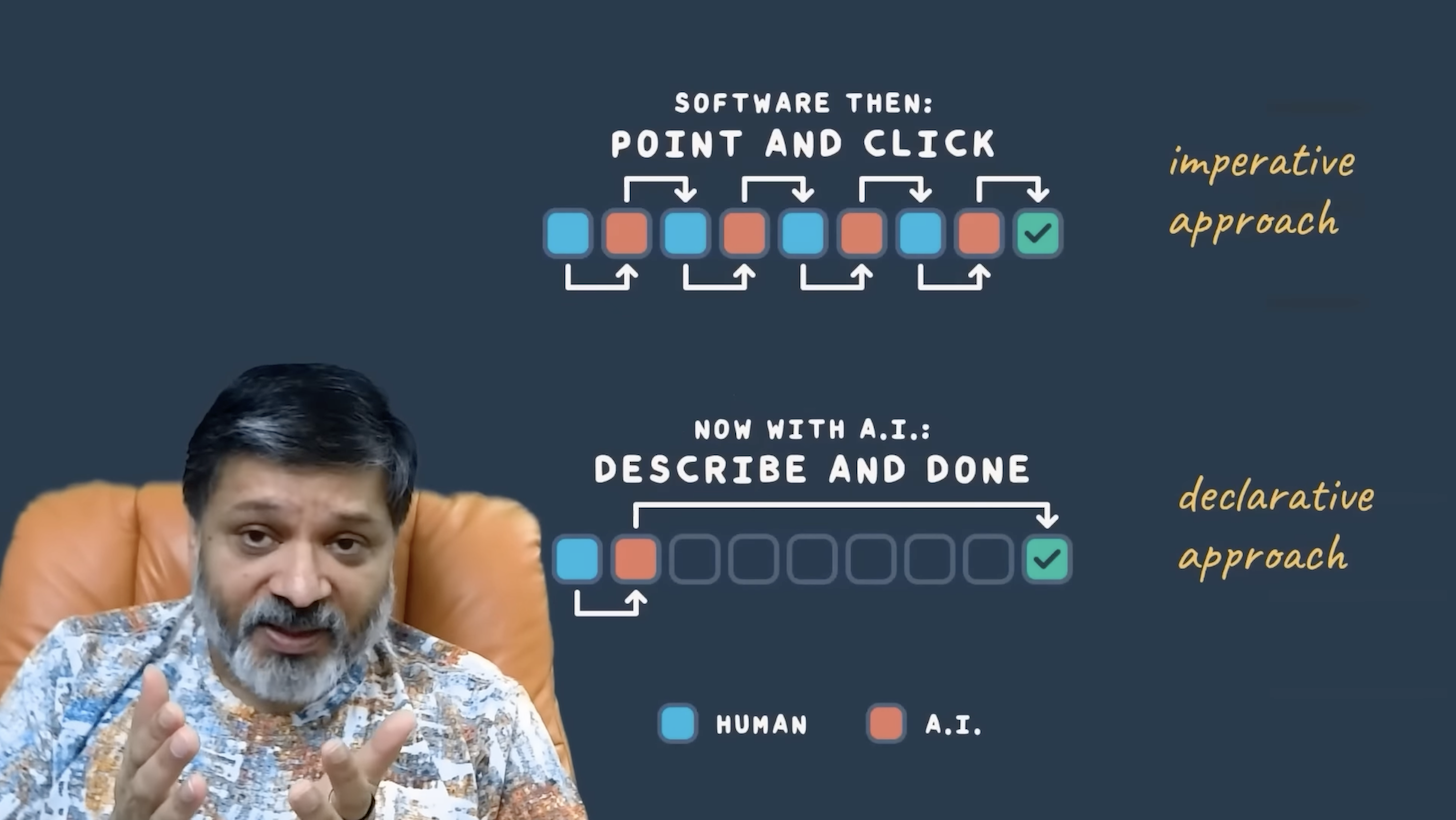
You didn’t need to navigate any menus or screenfuls of buttons, dropdowns, checkboxes. Dharmesh eloquently summed up this new mode of software interaction as a shift from point-and-click to describe-and-done.
Over the past nine months, ChatSpot rapidly expanded its capabilities to support sales prospecting, SEO consulting, rich content creation, business analysis, deal optimization, etc. Yet as all these powerful features were enabled, the user interface for ChatSpot remained a simple text prompt.
Hundreds of other martech companies followed suit, adding natural language “chat UX” interfaces to their products. Many of these new AI-powered UIs are still in their beginning stages, just scratching the surface of what will be possible in the year ahead. But as they make more existing product functionality more accessible through this UI — and then add even more new functionality — they actually reduce their UX complexity.
It’s almost counterintuitive. The more capabilities you add, the simpler the UX becomes?
The underlying complexity of what their products can do remains. In fact, as we’ll discuss in a minute, the complexity of these martech sytems is actually likely to increase further. But the martech UX on top of those systems has become much simpler. And it promises to get even simpler yet.

How do you get simpler than a natural language UI? By enabling that UI to serve outcomes more than tasks.
The first generation of chat UX interfaces required you to be fairly specific in each task you wanted to do. For instance, “give me a report of sales by country”. The newer generations – and they’re iterating rapidly — will be able to understand higher-level requests, such as, “which countries are lagging in forecasted performance and how can we boost close rates on their most important deals?”
This next generation of martech UX will be legit AI agents, capable of pursuing higher-level goals. They’ll be able to plan multiple steps, adjust their plans based on feedback from the actions they take, leverage any data or API functionality they have permission to access, and even know when to consult a “human in the loop” for clarifications or confirmations.
AI agents will serve as uber-aggregators in the martech stack, providing an aggregated user experience through their chat UX, while also aggregating process functionality and tapping into aggregated data warehouses behind the scenes to achieve their goals. Governance will be embedded into or layered on top of these agents.
For marketers, the distinction between process, control, and experience will be blended behind the interface to these agents.
Removing a big constraint on system complexity
Ironically, while AI agents reduce martech UX complexity, they will almost certainly increase underlying martech system complexity.
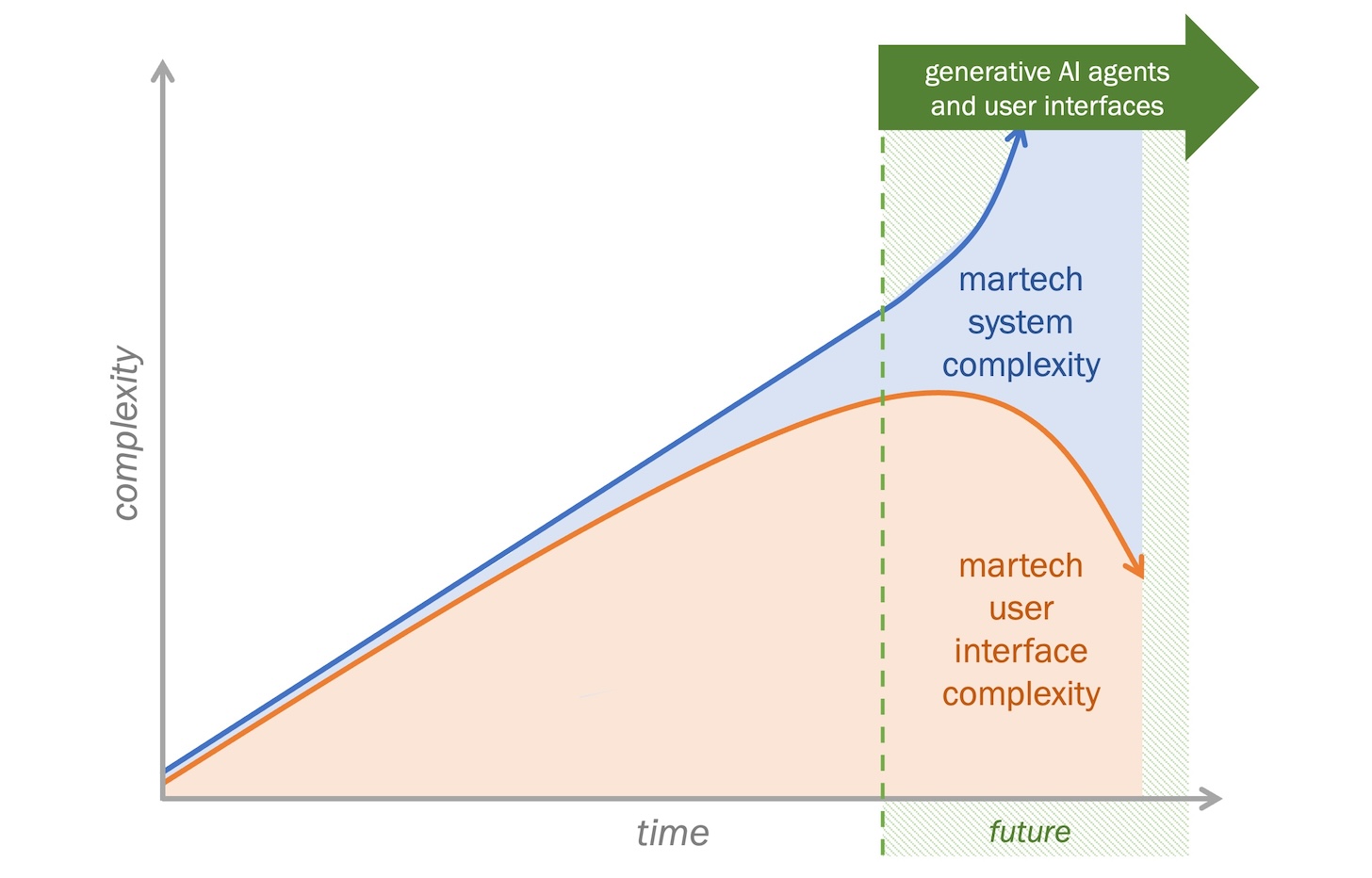
In many ways, the limits of how much martech UX complexity humans could deal with had become a significant constraint on how much additional martech system complexity could be implemented effectively. There was only so much data, so much functionality, and so many combinations of those elements chained together that even an expert marketing ops pro could keep track of in their head.
Humans have many wonderful qualities. Comprehending exponential complexity is not one of them. But AI agents can excel at processing hundreds, thousands, even millions of data and functionality combinations and sequences.
As we unshackle what martech systems can do from the martech UX we use to manage them, underlying system complexity will be free to grow at a much faster pace. It will look more like the chart above than the one at the top of this post.
Will such exponential growth in martech system complexity be a good thing?
Truthfully, it’s hard to predict. As noted, humans aren’t great at comprehending exponential complexity. But I think the answer will be yes. Why? Because customers and markets are complex. Enabling our martech systems to adapt to that complexity with far greater fluidity than we could have ever dreamed of in the past has the potential to dramatically improve the effectiveness and efficiency of marketing.
Customers are complex.
Therefore, markets are complex.
Therefore, marketing is complex.
Therefore, martech systems are complex.
But martech UX doesn’t need to be as complex anymore.
I’ll reaffirm: this will be a profound inflection point in martech.
